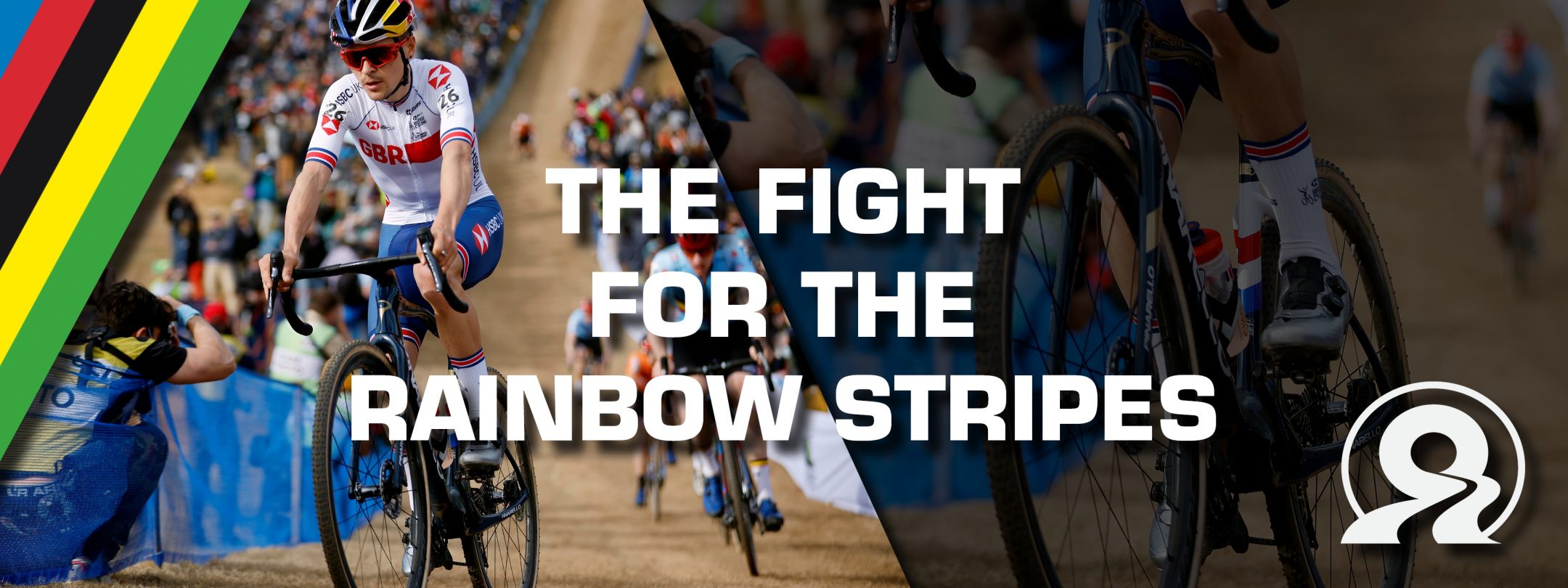The Fight for the Rainbow Stripes - Cyclocross World Championships
This past weekend, the Cyclocross World Championships took place in Fayetteville Arkansas, United States; It is the second time that this event has been held on U.S. soil, the first time was in 2013. Being outside of Europe (not usual for the Worlds) gave a different feeling to the races in terms of not only landscape, but also in terms of energy as the American riders were able to feel more support by the crowd. Furthermore, travel and stay logistics were also a bit different this time as the teams faced a particular situation created by the pandemic such as reduced staff, and the need of being locked up in the hotel to avoid any contagion before the race. But despite all that atypical circumstances, the athletes were present and ready for the battle for the rainbow jerseys, but as in all competitions only a few were able to achieve this goal.
For Challenge, the World Championships are always the best scenario to test its handmade tires, as its premise is to provide products capable of merging grip, suppleness, control and speed in the same package, and the results of the CX Worlds lived up to that.
The event started with the Women Junior race which gave Challenge the first World Championship win of the year. This first race was won by the British rider Zoe Backstedt who added one more milestone to an incredible CX season. Moving on to the final and most anticipated race, Tom Pidcock lived up to the expectations by winning in the Men Elite category after a tough fight against the Belgian riders and giving to Challenge another World title. Tom became the first-ever British athlete to win the CX Men Elite Championship. Before the Worlds, Challenge interviewed Tom and he pointed out what is his goal for the next few years, to which he replied “World Champion in each discipline, that’s probably my biggest goal”, and this is definitely the beginning of the path towards that objective.
Tire Choice (#)
The Worlds course was a fast, packed, manicured track with the key section a fast-winding descent followed by a long steep climb in the woods. If it was 100% dry you could run File tread (Chicane our even Dune) but even 30 minutes of rain turned it into a muddy Limus slog. Snow and freezing temperatures the two weeks prior added moisture that dried in most places. In the critical wooded section there were multiple 2-3 meter muddy sections left that could cause momentary loss of traction so most everyone opted for the fastest, most reliable all around tire, the 45+ year old Grifo (or copies of the same) so they would not lose a second of momentum as it features fast rolling knobs and a center section that offers excellent pedaling and braking traction. Pidcock’s version of the Grifo has a silk casing that comes up with many perks such as lightness, enhanced shock absorption and suppleness. Regarding tire pressures, ranges around 1.5 BAR were the way to go.
Overall, the athletes riding Challenge tires had significant results during the Worlds. To sum up, in the Women Junior category, 8 riders in the top 10 were riding Challenge tires including the winner of the race. In the Men U23 category, 3 riders in the top 10 including the 3rd place were riding Challenge. In the categories Men Junior and Women U23 6 riders in the top 10 were using Challenge in each group (including two podiums in the first group). And finally, the Men Elite category was won by a rider using Challenge tires.

